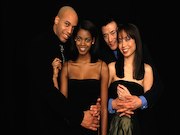‘World’s Most Beautiful’ list in 2017 included wider variety of skin colors, older age groups, more females
WEDNESDAY, Oct. 11, 2017 (HealthDay News) — Beauty standards are evolving over time, with a wider variety of skin colors and inclusion of older age groups in more recent years, according to a research letter published online Oct. 11 in JAMA Dermatology.
Mayra B.C. Maymone, M.D., D.Sc., from Boston University School of Medicine, and colleagues compared People magazine’s World’s Most Beautiful (WMB) list in 1990 with that in the 2017 issue to examine whether beauty standards have changed. The 50 celebrities from the 1990 WMB list were compared with the 135 from the 2017 WMB list.
The researchers found that in 1990, Fitzpatrick skin types I to III represented 88 percent of the celebrities on the list and Fitzpatrick skin types IV to VI represented 12 percent; in contrast, in 2017, Fitzpatrick skin types I to III and IV to VI represented 70.4 and 29.6 percent, respectively (P = 0.01). There was an increase in mean age, from 33.2 years in 1990 to 38.9 years in 2017 (P = 0.003). There was also an increase in the proportion of females (52 to 88.1 percent; P < 0.001) and an increase in the proportion of individuals of nonwhite race (24 to 40 percent; P = 0.04). Those of mixed race were represented by 2 percent and 10.4 percent in 1990 and 2017 (P = 0.07).
“The classic notion of beauty is a matter of mathematical conceptions and instantiating definite proportions,” the authors write. “We found that these beauty standards are evolving as people learn how to integrate the effects of media with exposure to new cultures and different norms.”
Copyright © 2017 HealthDay. All rights reserved.








